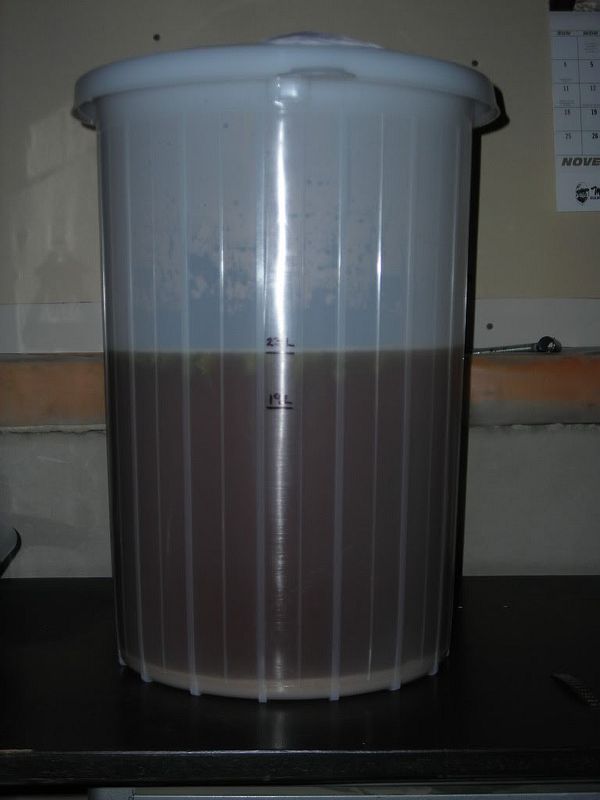rohovie
Active Member
Hello all,
I am new to this form, I've been trying to read a lot of the fourms on the site to learn as much as I can. I started my first batch tonight, I went with the Barons - Canadian Pilsner.
I added the water to the premixed wort and the bentonite in the primary fermenter and mixed it up. I added the yeast and the hops then went upstairs to wash off some equipment. When I came back downstairs I noticed a white 'sediment' in the bottom of the primary. (As seen in the picture below). Is this normal? And what is it?

Thanks in advance,
MIke
I am new to this form, I've been trying to read a lot of the fourms on the site to learn as much as I can. I started my first batch tonight, I went with the Barons - Canadian Pilsner.
I added the water to the premixed wort and the bentonite in the primary fermenter and mixed it up. I added the yeast and the hops then went upstairs to wash off some equipment. When I came back downstairs I noticed a white 'sediment' in the bottom of the primary. (As seen in the picture below). Is this normal? And what is it?

Thanks in advance,
MIke




